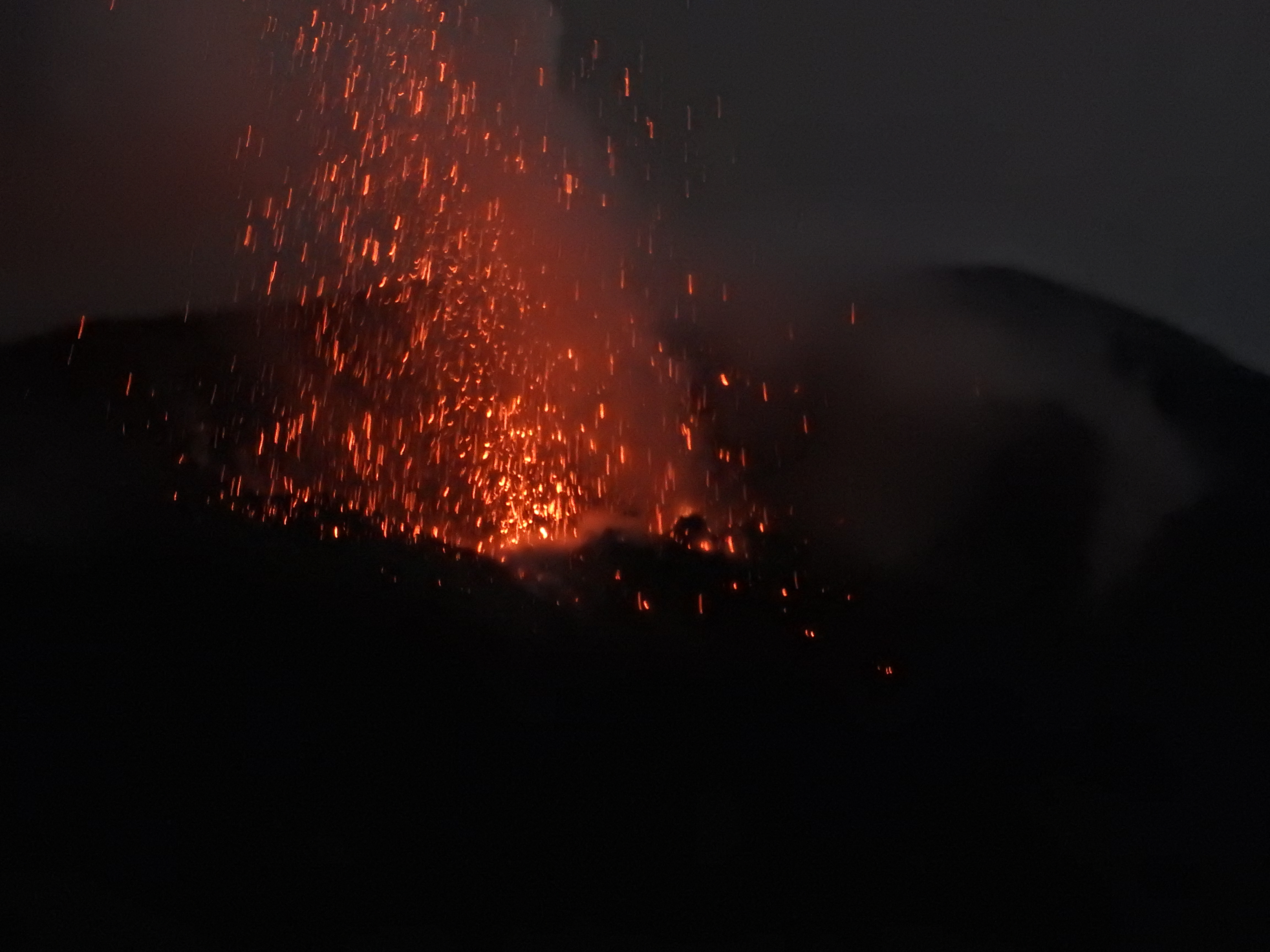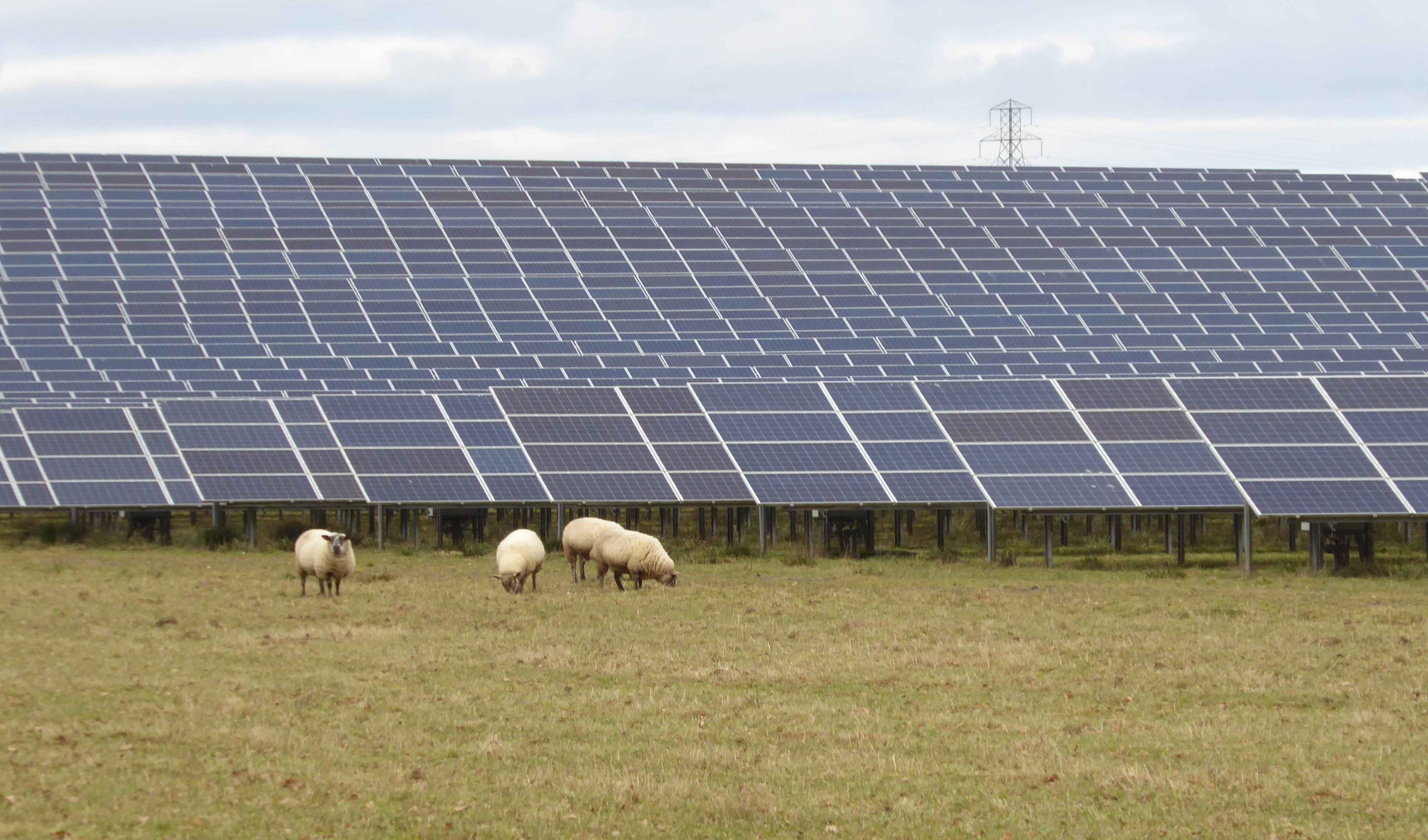Following a recent holiday, I have penned my observations on environmental issues and progress (or lack of) in Sicily. It is always interesting to compare the UK with other countries.
Background
Sicily is an island in the Mediterranean, to the south-west of Italy. It is about the size of Wales with a population of six million. It has an interesting history, full of Greek and Roman ruins, but today is one of Italy’s poorest regions with high unemployment. Persistent levels of corruption deter business investment, although tourism is growing.
Volcanoes (and CO2)
Let’s start with volcanoes, which is what attracted me to Sicily. Italy has around 12 potentially active volcanoes. I visited Stromboli and Etna; both are semi-permanently active. This got me thinking about their climate implications.
Like coal fired cooling towers, most of the visible emissions are of water vapour (steam). But hidden within this, Stromboli emits around 400 tonnes of CO2 per day, or 150,000 per year. A 1GW coal fired power station emits fifty times more, 7.5 million tonnes. Globally volcanoes emit 100-500 million tonnes of CO2 per year versus 40 billion from human activity. Today, human pollution is worse than even the biggest eruptions in recorded history, such as Krakatoa in 1883.
Volcanoes also emit methane, but this is relatively negligible. Conversely the sulphur dioxide emitted from major eruptions can have a regional, or even global cooling effect, but this usually wears off after months, a year or two at most.
Drought
Sicily adopted a ‘state of emergency’ in May 2024 because of drought and this is still in force. There have been above average temperatures, and below average precipitation, particularly in the winter. This is in-line with the climate change predictions of the IPCC. Sicily only has one permanent natural lake, which has virtually dried up, and reservoirs are at an all-time low. In some rural areas water rationing is in force, with the water supply cut off for hours every day. This is compounded by the high rate of water leakage, due to poor maintenance of water infrastructure – up to 50% compared to around 20% in the UK.
The drought affects nature, agriculture, and rural villages. Heat stress weakens trees and makes them susceptible to disease. Driving across central Sicily I was heart-broken to see so many dead and dying trees. Irrigation for agriculture has been cut off leading to the loss of olive trees and grapevines as well as dried up pasture for cattle. Wildfires have caused untold damage.
Of course, water needs are prioritised. Most tourists in coastal resorts are blissfully unaware that there is a problem.
Electric Cars
I saw very few public charge points and didn’t notice electric cars although they are not so visible as in the UK where there is a green stripe on the number plate of every new electric car. 5% of cars sold last year across Italy were fully electric, comparing unfavourably with 22% for the UK. In Sicily, less than 2% of cars sold are electric. The region is less wealthy; there is limited charging infrastructure and fewer incentives to buy electric cars. I also observed that most people live in densely populated towns with narrow streets and in large apartment blocks where it is more difficult to install the infrastructure required to support electric cars.
Road Infrastructure
Sicily is mountainous and traditionally was connected by narrow twisty roads. Dual carriageways have been built across this terrain linking the major cities. Many are built on kilometres of concrete stilts, presumably to protect the small agricultural holdings below. From my observation, much of this infrastructure is crumbling with roadworks and restrictions everywhere, including collapsed concrete viaducts. However, I didn’t see much actual remedial work taking place.
Major new infrastructure is also being built. A new motorway across the island and high-speed rail. Plans are in place to build a combined road and rail bridge across the Messina Strait to connect Sicily to Italy. This will be the longest single-span suspension bridge in the world at 3,300m long. No doubt this will lead to a huge increase in traffic, trade, and tourism.
Solar and Wind
I also observed very few solar farms, and few solar panels on roofs. This is surprising in an island with such high solar potential. However, across Sicily 22% of electricity is generated by solar, 18% by wind and most of the remainder from gas power stations. This compares to the UK with 23% from wind, 6% solar, 27% from gas, plus nuclear, hydro and biomass. Clearly there are solar farms in Sicily that I did not see. Incidentally, our local guide on Etna pointed to hundreds of wind turbines, none of which were spinning. She said this was due to incompetence and corruption – grants were received to build the turbines, but the infrastructure is not in place to use the electricity. Of course, this happens in the UK too, where windfarms have been built faster than the transmission network to take the electricity to areas of demand.
Litter
I was appalled by the roadside litter across the south-east of Sicily. I am used to seeing litter blighting UK roads, but this is usually individual drink containers tossed out of vehicle windows. Here it was on an institutional scale, with carrier bags tossed out of vehicles, intermingled with mattresses, furniture, broken toys etc.
The few locals that I spoke to were also appalled and stated it was due to poor infrastructure, corruption, and poor enforcement of legislation.
Invasive Species
Sadly, wherever you go, there is a problem with invasive species. Different species in different locations. Here it was prickly pears - the cacti that you see across the Mediterranean, which is native to the Americas. It spreads quickly, and with its spikes, becomes impenetrable to humans.
Sugarcane was introduced to the island of Stromboli to act as a windbreak to protect grapevines grown on the steep terrace slopes of the fertile volcano. When the terraces were abandoned, the ‘rewilding’ didn’t return the island to its original state. Instead, the four-metre-tall sugarcane quickly spread across the lower slopes of the island, creating a highly flammable fire risk. Fires expose the fragile soils to occasional heavy thunderstorms resulting in deep erosion gulleys. Feral goats are also breeding out of control and eating the vegetation, native and invasive alike.
Flying
I read easyJet’s in-house magazine on the flight home. There was an article on ‘destination net zero’ which stated that “easyJet’s operations are negatively contributing to climate change”. This required some more research on my return! Their environmental policy states that they are “committed to a 35% reduction in greenhouse gas emissions per passenger/km 2019-2035, which will be achieved primarily by buying the most fuel-efficient aircraft, and 78% by 2050. They will comply with EU rules on sustainable aviation fuel, will “explore hydrogen” as an alternative fuel, and will then offset any remaining emissions, planning to be net zero after 2050. This does not tally with their claim to be ‘negatively contributing to climate change’ today. Incidentally, they emitted 8.1m tonnes of CO2 in 2024, up 8% from 7.5m in 2023, primarily due to an increase in passenger numbers. Oh dear.
Conclusions and lessons learnt
There is a dilemma here. There is a strong correlation between individual wealth and carbon emissions. Richer people have larger houses, travel more and buy more stuff. Yet, wealthier countries can afford to invest in the new infrastructure, like solar panels, recycling facilities and electric cars, that are essential to decarbonise our lifestyles. Perhaps one to explore in a future blog!
- Humans cause much more environmental impact than volcanoes.
- Climate change, in line with scientist’s predictions, is already drying out the south of Europe with dire consequences for nature, farmers and eventually for everyone that lives and visits there.
- Consumers need incentives to overcome inertia and encourage them to buy electric cars and to install solar panels. Governments can play a crucial role in accelerating the rollout of electric cars and rooftop solar.
- Tackling litter is a ‘battle’ that can be won with political will, backed by public support. Deposit return schemes (Norway, Germany) for drinks containers, and plastic bag charges (Denmark, UK) are an essential step forward, backed up by strong institutions and local government.
- Invasive species are a global problem but can have a greater impact on small islands. Community action is one solution.
- Do not believe every claim made by airlines!
--------------------------------------------------------------------------------------------------------------------------
Carbon Choices
To join my mailing list, email me at This email address is being protected from spambots. You need JavaScript enabled to view it. with the header “please subscribe”.
You might also enjoy my book, Carbon Choices, on the common-sense solutions to our climate and nature crises. Available from Amazon or a signed copy direct from me. I am donating one third of profits to rewilding projects.
Please follow me on social media:
LinkedIn, X, Facebook, Instagram and now on Bluesky









